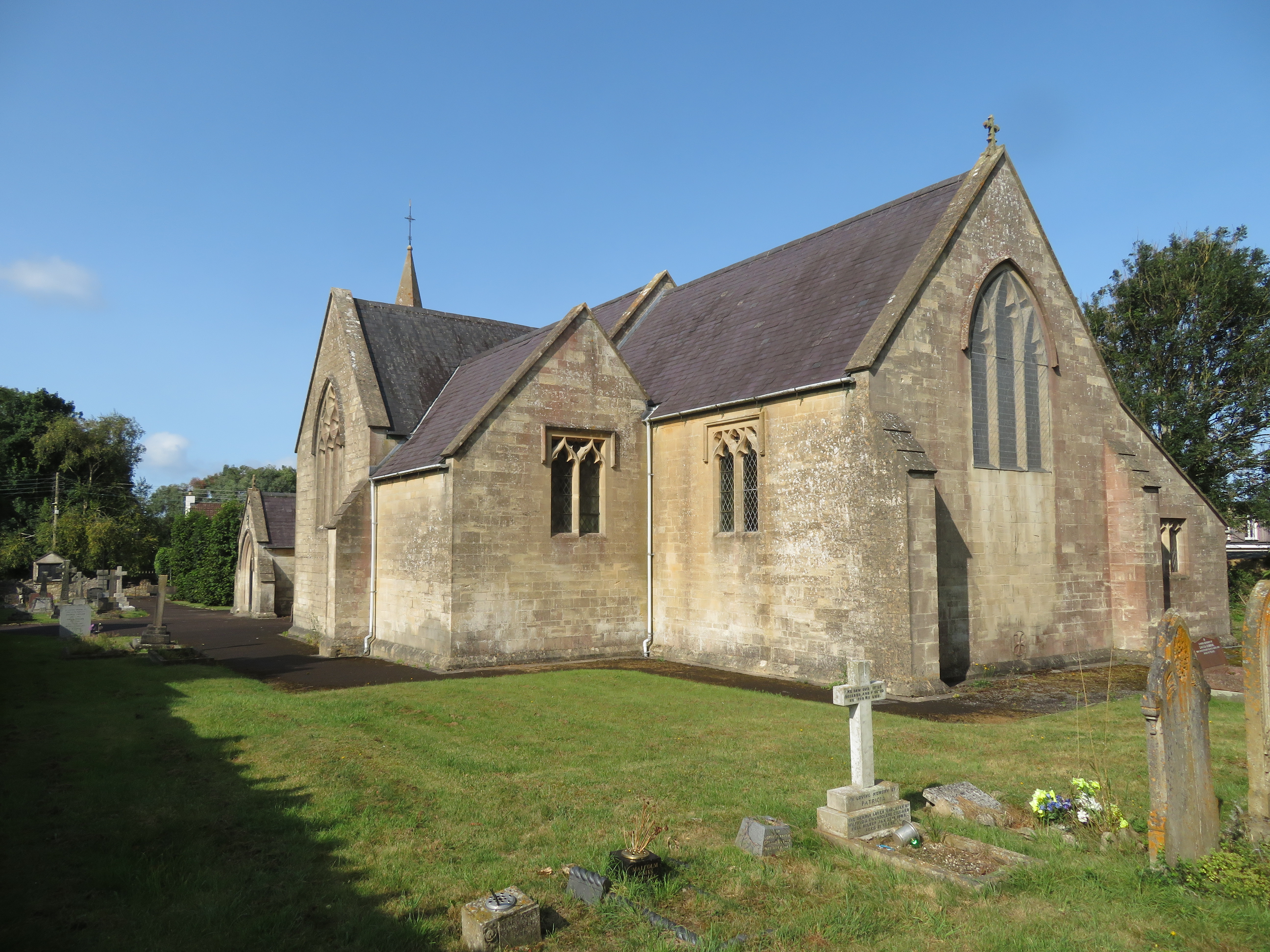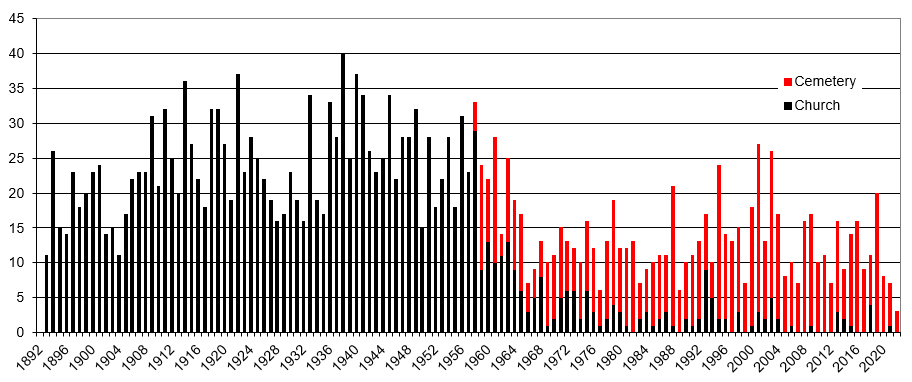
The ecclesiastical parish of Peasedown St John came into being in 1874 made up of parts of Dunkerton, Camerton and Wellow. The civil parish wasn’t created until 1954.
From the Bath Chronicle of Thu 29 Oct 1874 p2 col e:
CHURCH OPENING NEAR RADSTOCK.― The opening of a new iron church at Peasedown, Redpost which has been erected by the munificence of the Misses Jarrett, of Camerton Court, to provided temporarily for the spiritual wants of a large colliery population, was celebrated last Thursday by special services. . . .
The church stands in the centre of the district in a field skirting the turnpike road, near the Redpost. It is about three hundred yards from the public road, but Miss Jarrett has provided a spacious drive, with a footpath, through her land for the accommodation of the residents in the eastern portion of the district. The exterior walls and roof of the church are of iron and the building is surrounded by neat turf lawns intersected by paths, The style of the architecture is Gothic, and over the entrance door at the south end is an ornamental vane.

This iron church was replaced in 1893 by one built of Bath stone, again mostly paid for by the Misses Jarrett of Camerton Court - Anna Mary Jarrett (1838-1893) and Emily Elizabeth Jarrett (1840-1912) (Bath Chronicle of Thu 22 Jun 1893 p8). By the church was a graveyard of ¾ acre (0.3 ha) which was subsequently extended in 1918.

In this survey, the areas have been designated A, B and C. Section A is the original extent of the churchyard and it has rows A-Z. Section B is the 1918 extension northeast of the church and it has rows 1-23 with row 1 being at the north-eastern border. Section C is used for that part of the old churchyard near the entrance. It seems that it was originally intended to include this area is the overall grid-based numbering scheme but this wasn’t carried forward into the grave register. An anomaly in Section B is the that maximum number of the plots per row is variable ranging from 26 to 33. This is not what is found and it would seem that, rather than having a separation of one foot between plots, this was varied. There are also ‘additional’ rows (3a, 7a) which were found between rows 3 and 4 and 7 and 8 which seem to have been used for smaller plots for the burial of children.

The level of names of those buried being on memorials is about 30%.
The church is now part of St J’s Benefice which includes St James’, Foxcote, Sr Julian’s, Shoscombe, and St Julian’s, Wellow.